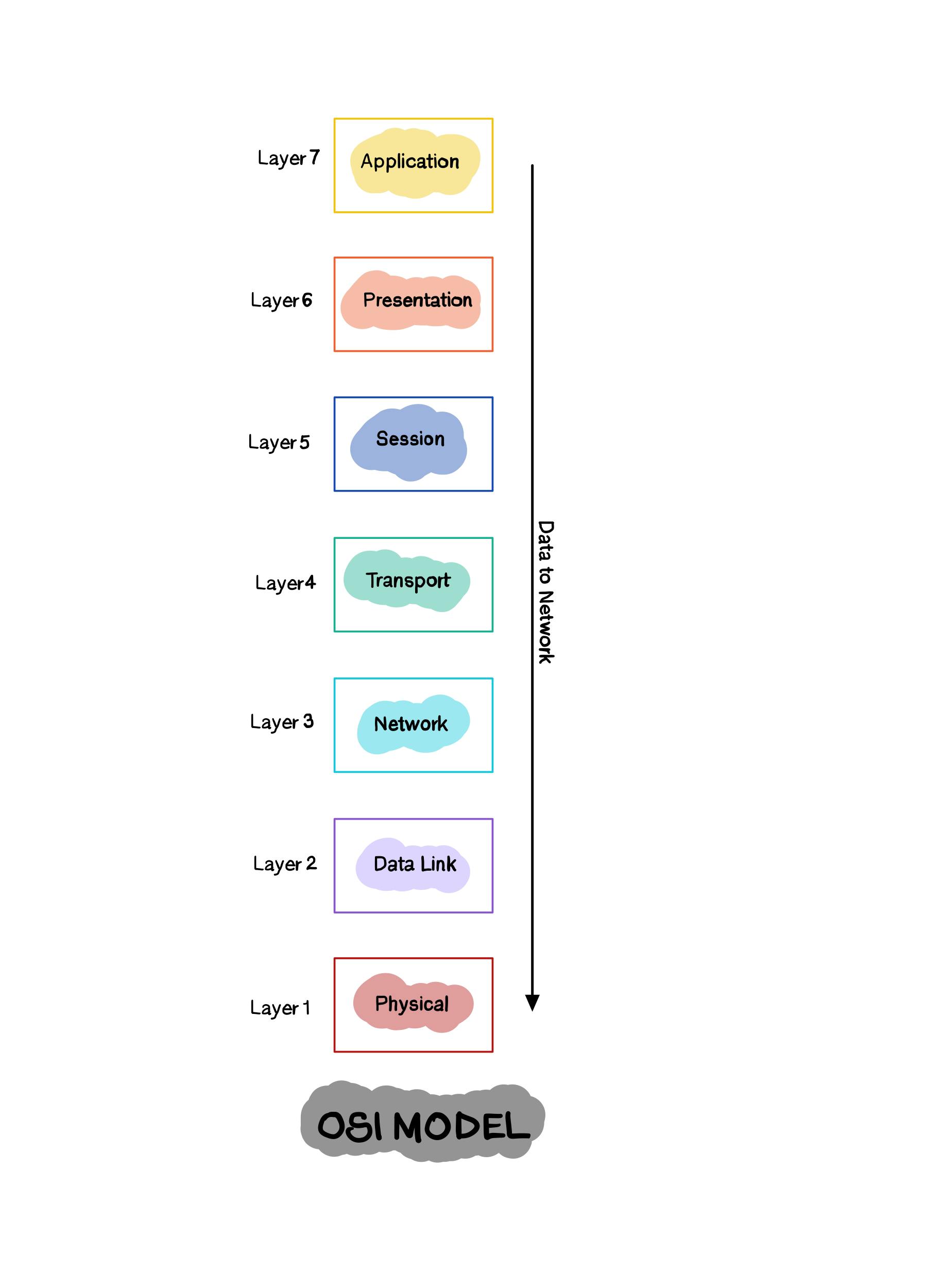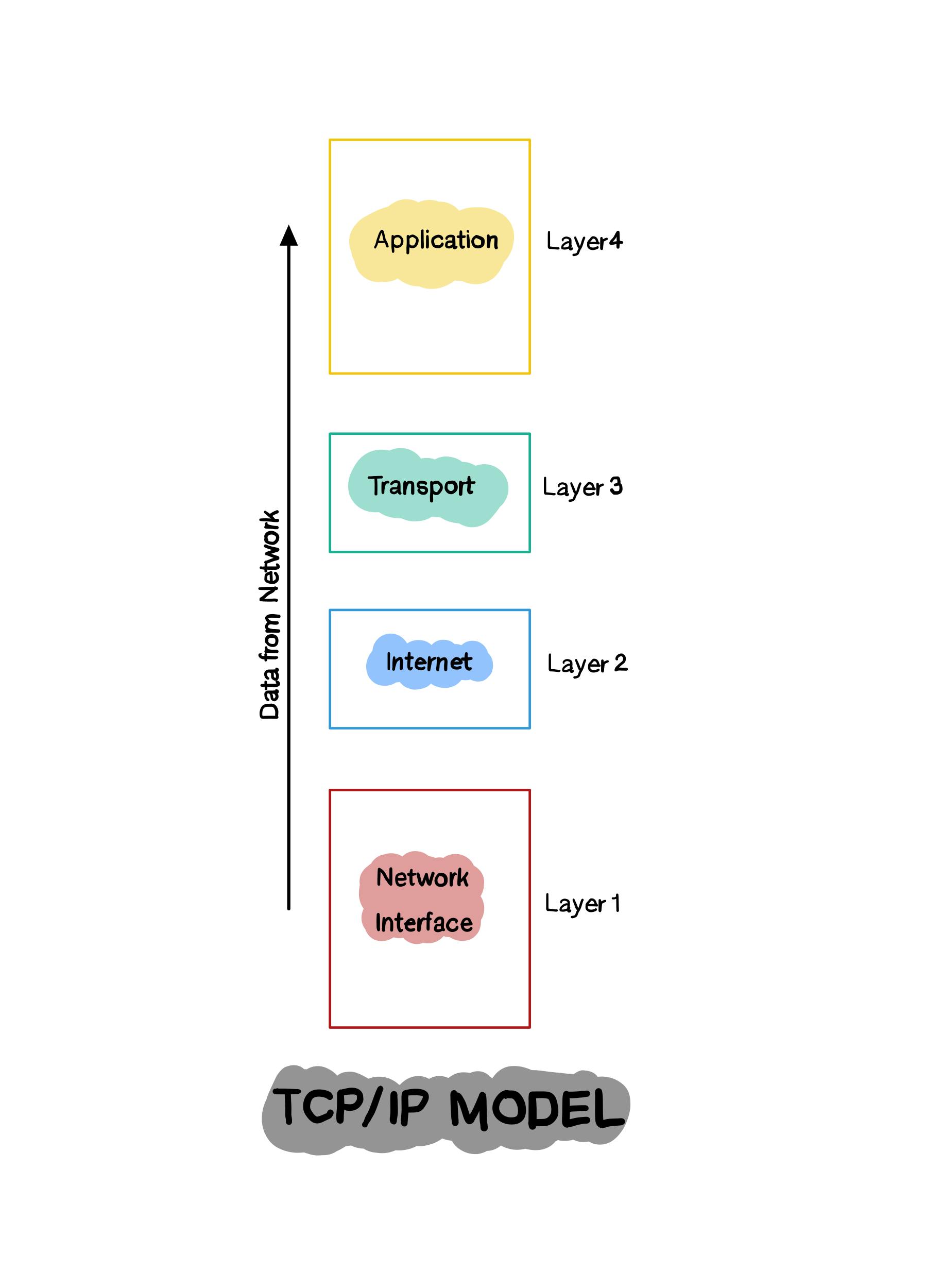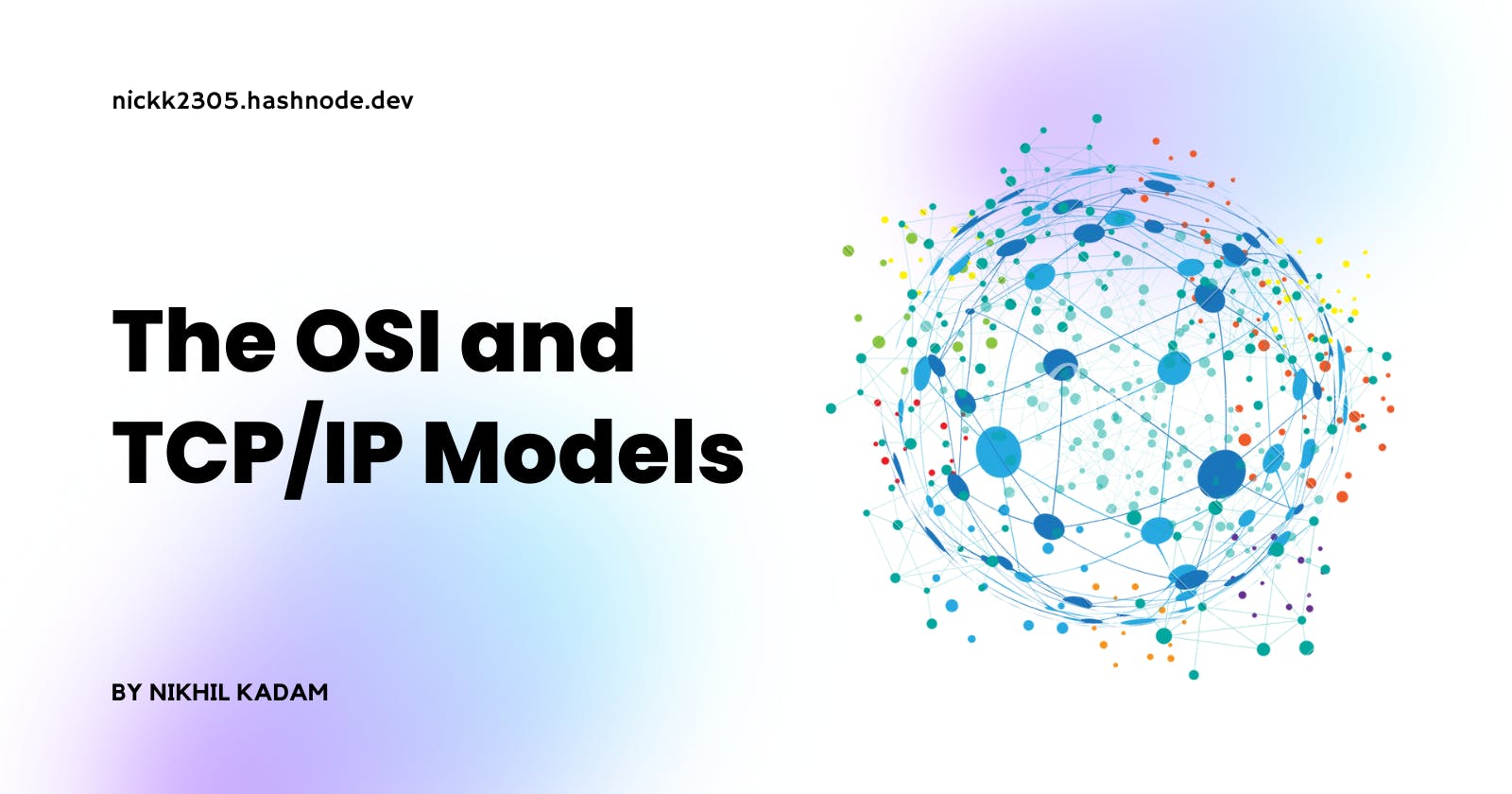Beginner's Guide to the OSI and TCP/IP Models
A Comprehensive Guide to the OSI and TCP/IP Models
Hey everyone, welcome back!🎉
In this blog post, we will be discussing the importance of the OSI model and the TCP/IP model in computer networks. These two models are essential for understanding how data is transmitted between devices on a network, and we will be covering their architecture, working, applications, and the differences between them.
Let's see each of them briefly.
Introduction to the OSI model
The OSI (Open Systems Interconnection) model is a framework used to understand how data is transmitted between devices on a network. It divides the process of transmitting data into seven distinct layers, each with its own specific functions and protocols. The OSI model helps standardize communication between devices, making it easier for different devices and systems to work together on a network.
The OSI model layers
There are seven layers in the OSI model, as follows. Note that Layer 1 (the physical layer) is the lowest in the model.
Physical layer
Data link layer
Network layer
Transport layer
Session layer
Presentation layer
Application layer
Let's discuss each layer one by one.

Shoutout: Illustrations represented in the blog were designed by Shivam Yadav.
Physical Layer
The physical layer is responsible for transmitting data in the form of bits over a physical medium, such as a copper wire or fiber optic cable. It deals with the physical characteristics of the transmission, including the type of cable, the connectors used, and the signaling method.
Examples of protocols that operate at the physical layer include Ethernet and WiFi.
Data Link Layer
The data link layer is responsible for establishing, maintaining, and terminating connections between devices on a network. It ensures that data is transmitted reliably and securely between devices on the same network segment.
Examples of protocols that operate at the data link layer include MAC (Media Access Control) and PPP (Point-to-Point Protocol).
Network Layer
The network layer is responsible for routing data between devices on different network segments. It determines the best path for data to travel based on factors such as network congestion and availability. Examples of protocols that operate at the network layer include IP (Internet Protocol) and ICMP (Internet Control Message Protocol).
Transport Layer
The transport layer is responsible for providing end-to-end communication between devices. It ensures that data is delivered reliably and in the correct order.
Examples of protocols that operate at the transport layer include TCP (Transmission Control Protocol) and UDP (User Datagram Protocol).
Session Layer
The session layer is responsible for establishing, maintaining, and terminating sessions between devices. It allows devices to communicate with each other and exchange data in a structured way.
Examples of protocols that operate at the session layer include SSL (Secure Sockets Layer) and TLS (Transport Layer Security).
Presentation Layer
The presentation layer is responsible for translating data between different formats, such as ASCII and Unicode. It ensures that data can be understood by the devices that are communicating with each other. Examples of protocols that operate at the presentation layer include JPEG (Joint Photographic Experts Group) and MP3 (MPEG audio layer 3).
Application Layer
The application layer is the highest layer of the OSI model and is responsible for providing services to the user. It is the interface between the network and the user, and it includes protocols such as HTTP (Hypertext Transfer Protocol) and FTP (File Transfer Protocol).
Introduction to the TCP/IP model:
The TCP/IP (Transmission Control Protocol/Internet Protocol) model is a framework used to transmit data across networks. It divides the process of transmitting data into four distinct layers, each with its own specific functions and protocols. The TCP/IP model is the basis for the internet and is used by almost all devices that are connected to the internet.
The TCP/IP model layers consist of four layers:
Network interface layer
Internet layer
Transport layer
Application layer

Network Interface Layer
The network interface layer is responsible for transmitting data over a physical medium, such as a copper wire or fiber optic cable. It deals with the physical characteristics of the transmission, including the type of cable, the connectors used, and the signaling method.
Examples of protocols that operate at the network interface layer include Ethernet and WiFi.
Internet Layer
The internet layer is responsible for routing data between devices on different network segments. It determines the best path for data to travel based on factors such as network congestion and availability. The main protocol that operates at the internet layer is IP (Internet Protocol).
Transport Layer
The transport layer is responsible for providing end-to-end communication between devices. It ensures that data is delivered reliably and in the correct order. The main protocols that operate at the transport layer are TCP (Transmission Control Protocol) and UDP (User Datagram Protocol).
Application Layer
The application layer is the highest layer of the TCP/IP model and is responsible for providing services to the user. It is the interface between the network and the user, and it includes protocols such as HTTP (Hypertext Transfer Protocol) and FTP (File Transfer Protocol).
Comparison of the OSI and TCP/IP models 🆚
There are several key differences between the OSI and TCP/IP models:
Number of layers: The OSI model has seven layers, while the TCP/IP model has four layers.
Layer names and functions: The layers of the OSI model are named and have specific functions, while the layers of the TCP/IP model are generally referred to by their function rather than by a specific name.
Protocols: The OSI model includes a wide range of protocols that operate at each layer, while the TCP/IP model includes fewer, more widely-used protocols.
Focus: The OSI model is more comprehensive and covers a wider range of functions, while the TCP/IP model is more focused on the transmission of data across networks.
Conclusion ✅
Understanding the OSI and TCP/IP models is important for anyone working with networks, as they provide a framework for understanding how data is transmitted between devices. While the two models have some differences, they both play a critical role in enabling devices to communicate with each other and exchange data.
References 📑
Thank you so much for reading!🙏🏻
I hope you found the blog helpful. If you would like to stay up-to-date on future blog posts, please consider subscribing to the newsletter. I appreciate your support and look forward to sharing more content with you.
